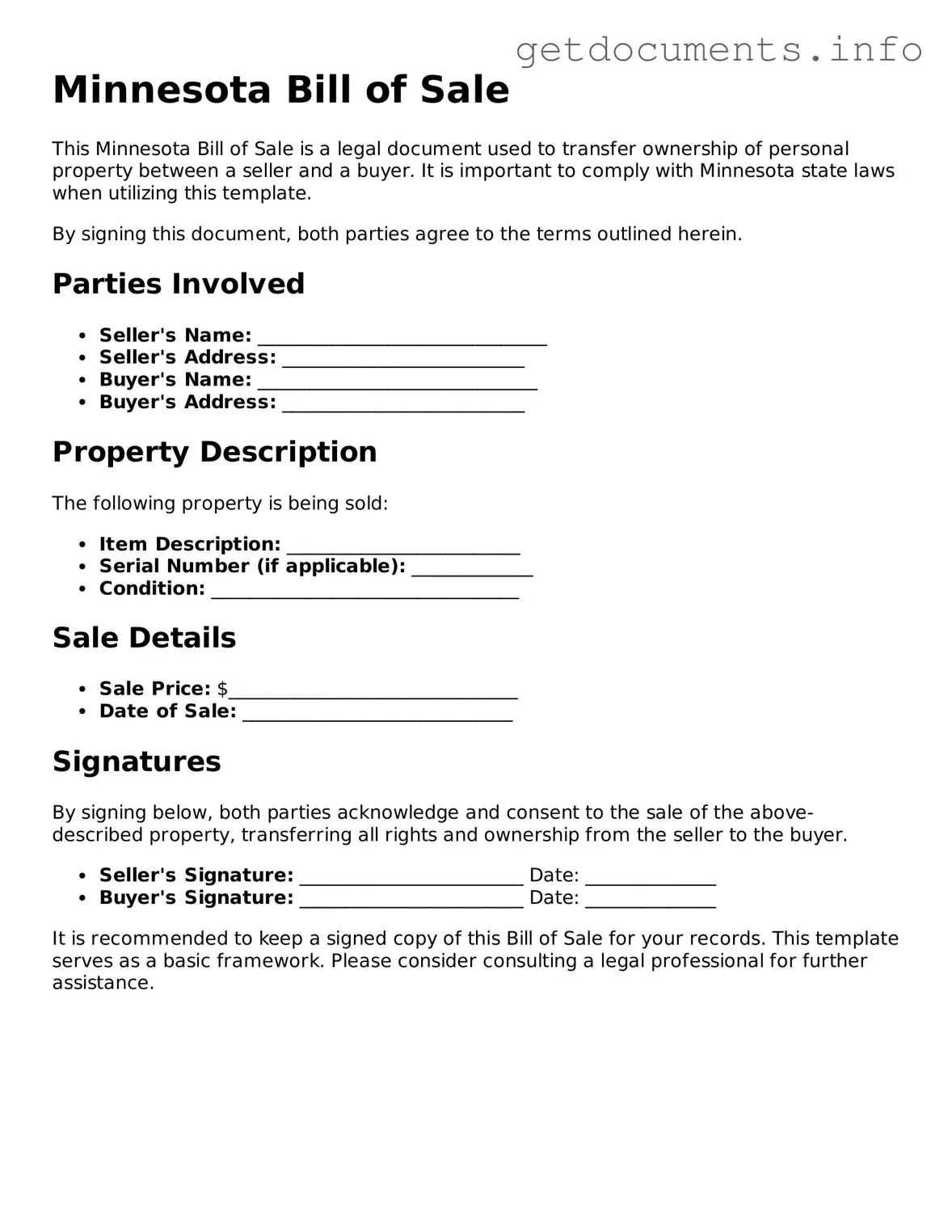Free Bill of Sale Template for Minnesota
The Minnesota Bill of Sale form is a legal document used to record the transfer of ownership of personal property from one party to another. This form serves as proof of the transaction and outlines the details of the sale, ensuring both the buyer and seller have a clear understanding of the terms. Ready to make your transaction official? Fill out the form by clicking the button below.
Access Bill of Sale Editor
